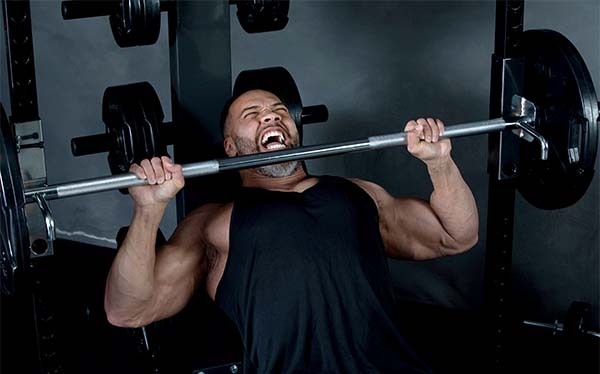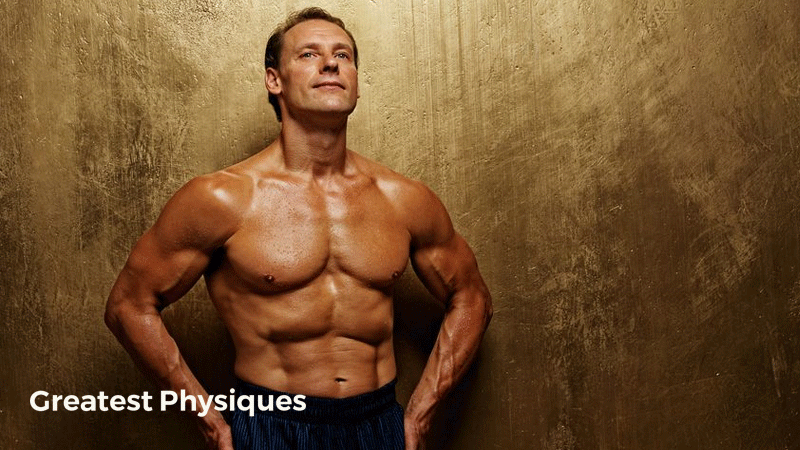Bodybuilding is a sport that involves creating an aesthetically pleasing physique using resistance training with free weight equipment and exercise machines, cardio workouts to accelerate fat loss, and a diet high in protein, carbohydrates, and healthy fats. Some bodybuilders also use supplements. Pushing muscles to muscular failure stimulates muscle growth, but training to failure every session can lead to overtraining and burnout.
Definition
Bodybuilding is a type of strength training that focuses on increasing muscle mass and reducing body fat. Typically, this is done through a combination of weightlifting and cardio. It can also involve other types of resistance exercises, such as plyometric exercises and circuit training. Those who participate in bodybuilding are known as bodybuilders or bodybuildresses. This is a disciplined sport that requires strict meal intake, consistent monitoring that includes bodybuilding blood tests and doctor consultations, and plenty of training. It’s not recommended for people with an eating disorder, as the stringent calorie tracking can trigger the symptoms of anorexia or orthorexia.
Throughout history, numerous ancient cultures have competed in feats of strength and admired muscular physiques. The modern sport of bodybuilding was developed in the early 20th century, and it gained popularity in the 1970s thanks to athletes like Arnold Schwarzenegger and Lou Ferrigno, and the release of the popular film Pumping Iron.
Today, the International Federation of Bodybuilding and Fitness (IFBB) oversees bodybuilding competitions around the world. Its competitors are judged on their muscle definition, symmetry, condition and overall presentation. It’s not uncommon for a bodybuilder to earn hundreds of thousands of dollars per year through personal appearances and sponsorships.
The IFBB also oversees amateur bodybuilding competitions, which are usually held in the spring and summer. Unlike professional bodybuilding, which involves a lot of high-profile publicity and endorsements, amateur bodybuilders compete without the benefit of large paychecks or media attention. These athletes often struggle to balance bodybuilding with other activities, such as work and school. They’re a great example of the power of dedication and hard work to achieve a better body. This is an ideal sport for solo athletes with the discipline and drive to commit to the rigorous workout schedules and dietary regimens required.
History
Bodybuilding traces its roots back to ancient times. It evolved out of power lifting and archaic forms of strongman competitions, in which men would crush rocks, lift cattle, and pull carriages in a show of strength. Those who participated in these events often trained to develop massive muscles as an expression of masculinity, which was viewed as a positive characteristic for men at the time.
By the late nineteenth century, the sport began to attract more and more participants who wished to gain muscular strength. This era also marked the advent of photography, which allowed striking images of men’s bodies to reach a wide audience. It was at this time that the first bodybuilder — Eugen Sandow, a Prussian strongman with an impressively large and symmetrical physique — became famous.
It is said that Sandow was a true ‘father of modern bodybuilding,’ because he promoted the idea of achieving a sculpted physique that was pleasing to the eye. Unlike other strongmen of the day who were bulky and unappealing to look at, Sandow was an aesthetic specimen who toured in a Ziegfeld production, and wealthy women paid to feel his biceps.
As bodybuilding grew in popularity, entrepreneurs seized upon the concept and began to distribute equipment and bodybuilding literature. Bernarr Macfadden, who later founded the modern fitness magazine Bodybuilding and Fitness, is considered by many to be the father of physical culture. He is credited with selling one of the first chest expanders.
The first official bodybuilding contest was held in 1901, and it was organized by Sandow. It was called the Great Competition, and judges included Sir Arthur Conan Doyle (the creator of Sherlock Holmes), and Charles Lawes. Today, bodybuilding is a multibillion-dollar industry, and there are several sanctioning bodies that organize competitions and award titles. Arnold Schwarzenegger is widely regarded as the greatest bodybuilder of all time, having won the Mr. Olympia title six times.
Training
Bodybuilding training focuses on a series of exercises designed to build maximum muscle mass. It requires large volumes of exercise, including long workouts and high repetitions of basic compound exercises like squats and deadlifts, as well as isolation exercises such as bicep curls and tricep extensions. This type of exercise is also called hypertrophy training because it increases muscle size by overloading the muscles. This overload can be achieved by increasing the number of sets and reps or by increasing the weight of the bar for each set.
In addition to building muscle, bodybuilding helps improve confidence and self-esteem by improving your appearance. It requires a lot of time and dedication, and it isn’t for everyone. However, even if you aren’t interested in bodybuilding competitions or want to look your best, a regimen of regular resistance training can give you a boost in self-esteem by helping you develop the physique of your dreams.
There are a few sports in which additional strength confers a competitive advantage, and this is where bodybuilding comes into play. In a variety of sports, such as volleyball, swimming, surfing, baseball and basketball, the more muscle mass and lower body fat you have, the better your performance will be.
Bodybuilding training, a form of resistance training, is used to increase muscle mass in the most efficient way possible. It is a good choice for athletes who are looking to improve their overall athletic performance, as it can help increase speed, power, coordination and agility. Bodybuilding is also used to decrease body fat levels and can be combined with strength training, as it can help increase the overall athleticism of an athlete.
Nutrition
Bodybuilding is a sport that requires rigorous training and nutritional support. Using a combination of resistance, weightlifting and aerobic exercise, bodybuilders strive to optimize muscle growth through hypertrophy, or increased muscle mass. Optimal results from training and nutrition require careful planning and discipline, as well as time to allow for muscular adaptation. The process of preparing for bodybuilding competitions can take months or even years and is divided into different phases of training and diet.
In general, a bodybuilding diet focuses on nutrient-dense foods in specific macronutrient ratios. A bodybuilder will typically eat a higher percentage of carbohydrates, moderate protein and lower fat than the average person. Carbohydrates provide a critical energy source for resistance training, helping to replenish glycogen stores in muscles after use. They also improve endurance during resistance training by increasing the amount of energy available to the muscles.
The optimal carbohydrate intake for bodybuilders is not fully established, but some studies suggest a carbohydrate intake of 5.3 g per kilogram of bodyweight daily. Carbohydrate intakes above this threshold may result in excessive increases in body fat mass.
Bodybuilders commonly supplement their meals with protein powder, creatine monohydrate and branched-chain amino acids (BCAAs). Protein is one of the primary building blocks of muscle. It is important to consume enough protein to meet daily requirements, as it provides the body with amino acids needed for cell growth and repair. Creatine is a popular supplement among bodybuilders, as it has been shown to increase strength and power during exercise. However, the benefits of creatine are not universal and additional research is required to determine its effects on resistance training. Stimulants such as caffeine are also used by bodybuilders to enhance performance and reduce perceived exertion.
Cutting
When bodybuilders are cutting, they eat less calories and restrict fat intake. They do this while preserving their muscle mass. The objective is to get as lean as possible before a contest. This process requires discipline and dedication. A successful cut may require weeks of consuming fewer calories than one’s body uses to maintain its current weight. It’s also common for bodybuilders to prepare most, if not all their meals in advance during a cutting phase, because doing so offers several benefits. It helps ensure that meals are healthy and on-target with their goals; allows for easy meal prep; limits impulsive snacking; and promotes consistency.
Preparing meals in advance during a bodybuilding cut also provides some control over portion sizes, which is important because the bodybuilding diet itself can be very restrictive. A good bodybuilding diet will include quality foods that are rich in protein and low in fat, sugar, and carbohydrates. It should also be high in fiber. A bodybuilding diet should also limit salt and eliminate processed foods.
In addition, preparing meals in advance during a bodybuilding cut reduces stress and saves time. It can also help prevent overeating, which can be a common problem when trying to lose a lot of weight quickly. This is especially true for women, who have a greater tendency to overeat while cutting (Lesser, 2010).
During a bodybuilding cut, it’s important to balance resistance training with cardio. Resistance training can stimulate muscle growth and burn additional calories. Cardio, however, shouldn’t be used as a replacement for resistance training. Too much cardio can actually burn muscle tissue and slow down weight loss. It’s also important to drink plenty of water and avoid soft drinks and soda. These drinks add empty calories to an already restrictive diet.




